On This Page
The Best Cooling Sheets of 2025
Our Top Picks
-
Best Overall
Luxome Luxury Sheet Set -
Best Value
Quince Organic Cotton Percale Sheet Set -
Best Luxury
Cozy Earth Bamboo Sheet Set -
Softest
Sweet Zzz Organic Bamboo Sheets -
Best All-Season
Brooklinen Classic Core Sheet Set -
Best Temperature Control
Miracle Made Sheet Set -
Best Organic
Homebird Cool and Crisp Percale Sheet Set
Best Overall
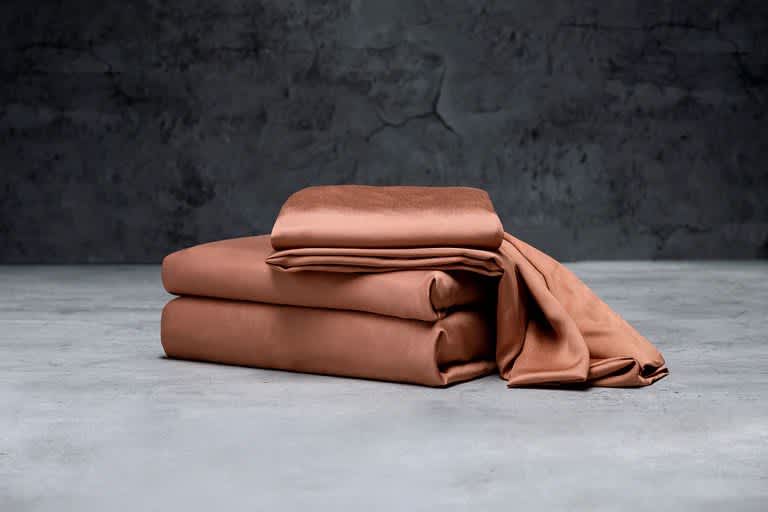
Luxome’s Luxury Sheet Set offers the best of both worlds for people who want breathable bedding that also drapes closely to the skin. The fabric has an exceptionally soft and smooth feel, and the sateen weave gives each item an elegant sheen enhanced by the bold color schemes.
Pros & Cons
Pros
- All items composed of moisture-wicking viscose from bamboo
- Generous pocket depth of 17 inches
- Available in 10 colors and seven sizes
Cons
- Sateen weave isn't ideal for people who prefer crisp bedding
- Fabric is prone to early pilling
Full Details
Best Value
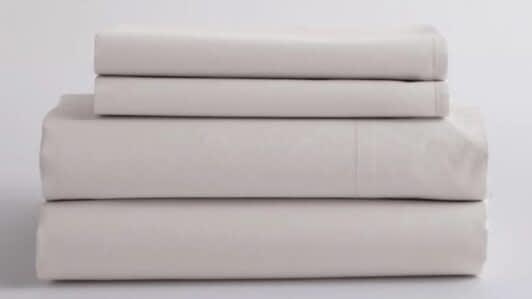
Quince’s Organic Percale Sheet Set proves you don’t pay too much for high-quality bedding. Each item feels luxuriously crisp at first but should soften with proper care, ensuring above-average breathability and enduring comfort over time.
Pros & Cons
Pros
- Breathable organic cotton composition
- Percale weave feels crisp and cool
- 365-night sleep trial
Cons
- Percale fabric has a crisp feel that isn't optimal for those who like smooth bedding
- Not sold in a twin XL size
Full Details
Best Luxury
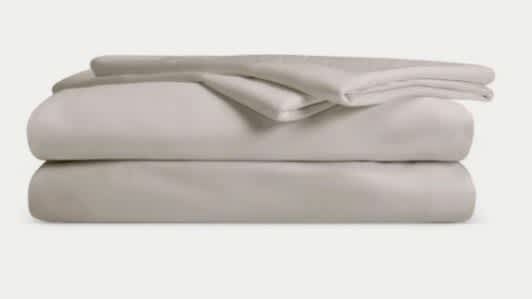
The Cozy Earth Bamboo Sheet Set offers exceptional softness and moisture-wicking properties to keep you dry on humid nights. We recommend this collection to anyone who enjoys bedding that drapes closely to the body.
Pros & Cons
Pros
- Silky-smooth viscose from bamboo sleeps cool and drapes closely
- Fabric is engineered to resist pilling
- 100-night trial period and 10-year warranty
Cons
- Sticker price is significantly higher than average
- Not ideal for people who like crisp sheets
Full Details
Softest
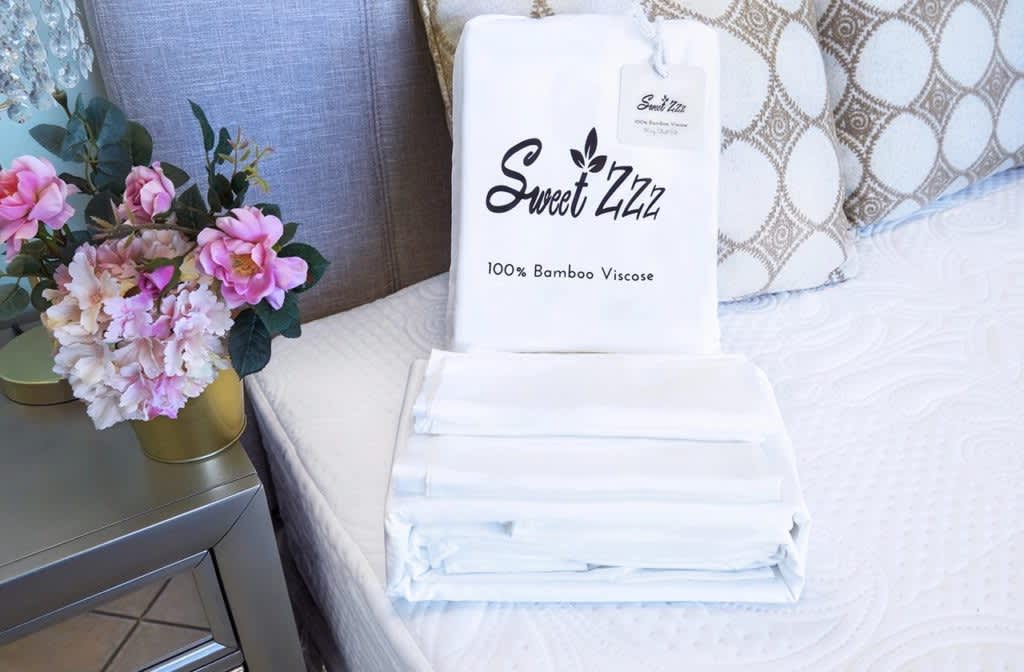
Sweet Zzz’s Organic Bamboo Sheets should check all the important boxes if you want bedding that’s soft, drapey, breathable, and long-lasting. Sustainable sourcing is another nice touch for those who prefer to buy and use eco-friendly products.
Pros & Cons
Pros
- Organic, bamboo-derived fabric is soft and eco-friendly
- Durable composition reduces pilling and other wear and tear over time
- Available in five colors and seven sizes
Cons
- People who prefer crisp bedding may need percale sheets instead
- Pocket depth limited to 14 inches
Full Details
Best All-Season
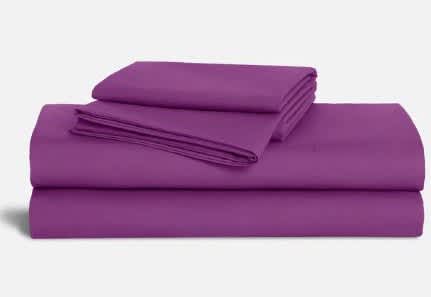
Brooklinen’s Classic Core collection is the quintessential cotton percale sheet set, offering an initially crisp, breathable design and softening over time for a more lived-in feel. Approachable pricing and a year-long sleep trial further sweeten the deal for budget-conscious shoppers.
Pros & Cons
Pros
- Crisp, breathable cotton percale gradually softens over time
- Extensive color and pattern selection
- All orders include a 365-night trial period
Cons
- Those who want softer, silkier sheets may prefer sateen-woven bedding
- 15-inch pocket depth isn't compatible with some high-profile mattresses
Full Details
Best Temperature Control
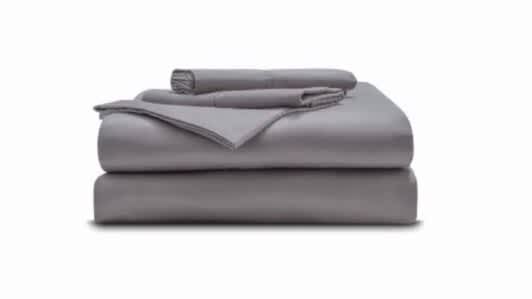
Silver-infused cotton and a crisp percale weave help ensure excellent thermoregulation for the Miracle Sheet Set – Signature. Each item in this collection has an exceptionally soft feel compared to other percale bedding we’ve tested, but we found the sheets and pillowcases still excel at breathability and temperature control.
Pros & Cons
Pros
- Supima cotton blended with silver is exceptionally soft and long-lasting
- Excellent cooling thanks to a crisp, breathable percale weave
- Silver fibers intended to reduce odor and keep the sheets fresh
Cons
- Percale weave may not feel soft or smooth enough for some sleepers
- Limited color selection
Full Details
Best Organic
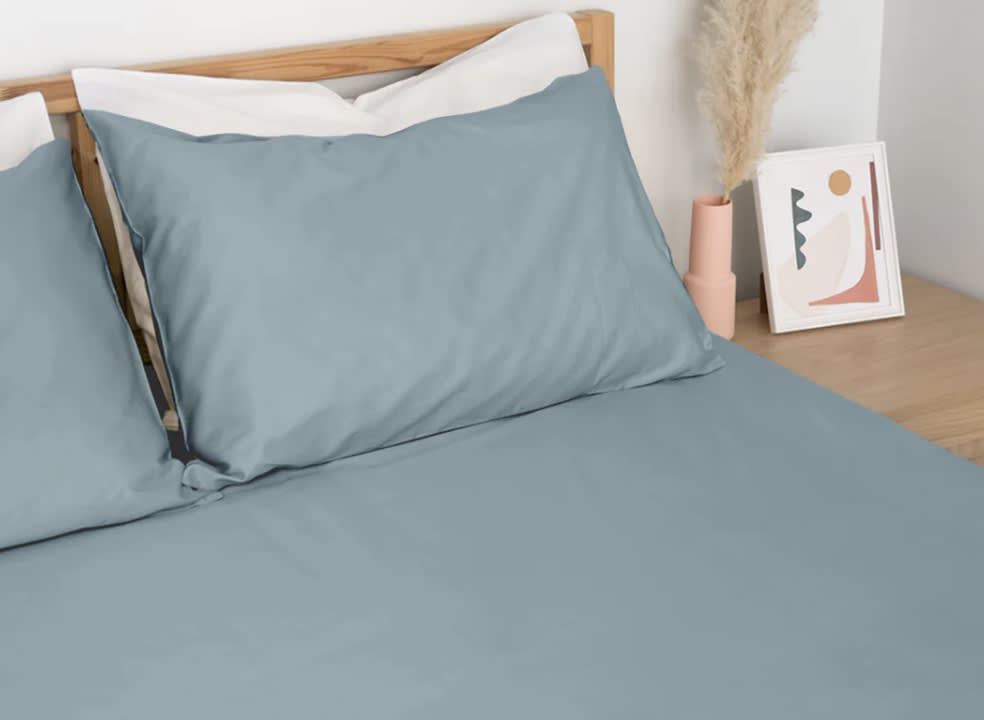
The Homebird Cool and Crisp Percale Sheet Set definitely lives up to its name. Each item should soften over time as the cotton fibers relax while retaining excellent breathability and temperature control.
Pros & Cons
Pros
- Long-staple organic cotton offers exceptional durability
- GOTS certification ensures sustainably sourced fibers
- Available in eight colors
Cons
- Not ideal for people who prefer silky-smooth sheets
- Flat sheets cost extra
Full Details
How We Test
For a cooling sheet set to get our stamp of approval, it first has to go through a series of tests in our Seattle sleep lab. We look carefully at material compositions to learn about the set’s fabric quality, weave, and thread count.
After that, we try each set personally in the lab and at home. We lie on a full set, checking to see how breathable and comfortable the sheets feel against the skin. We also read verified customer reviews and perform surveys to learn about how well cooling sheets perform for other people.
What Are Cooling Sheets?
Cooling sheets is a catchall term for bedding that promotes breathability and temperature control. Material, weave, and thread count all play a role in cooling. In general, cooling sheets are lightweight and don’t hug the body too closely. Common materials for cooling sheets include cotton, linen, Tencel, and rayon or viscose derived from bamboo.
In contrast, non-cooling sheets have the opposite effect. They are designed to retain heat and insulate you from the cold. While these sheets can be helpful — and even necessary at times — they won’t be very practical during hot or humid times of the year.
Aside from their composition, cooling sheets don’t differ much from regular sheets. Cooling sheet sets typically consist of a flat sheet, fitted sheet, and one or two pillowcases. Some larger bundles feature additional components such as duvet covers and comforters. While certain cooling materials tend to drive up price-points, cooling sheets aren’t necessarily more expensive than non-cooling sheets.
Who Are Cooling Sheets Best for?
People who naturally sleep hot can greatly benefit from cooling sheets. Many sheets feature materials that wick moisture away from the body, which can be helpful for people who frequently sweat in their sleep. Others who can benefit from cooling sheets include people who reside in relatively arid or humid climates, pregnant individuals, and those who experience hot flashes.
Cooling sheets are a great investment if you consider yourself a ‘hot sleeper,’ or if your local climate is prone to high heat or excessive humidity. The best cooling sheets are usually made from breathable fabrics such as cotton, linen, Tencel, viscose derived from bamboo, and silk. Other important considerations when choosing a new sheet set include weave or knit, size, pocket depth, and cost.
How Much Do Cooling Sheets Cost?
Cooling sheets can fall anywhere from less than $50 to more than $400. A lot of factors play a role in the price of new sheets. These include the quality of materials, the number of items in the sheet set, the size of the items, and the brand.
How Long Do Cooling Sheets Last?
The average sheet set lasts three years, but material composition is key. Many cooling fabrics for sheets are associated with above-average durability. These include Egyptian cotton, Supima cotton, linen, silk, and bamboo-derived textiles. With proper cleaning and care, sheet sets made from any of these materials can last five years or longer.
I sleep pretty hot and I’ve tried all sorts of sheets that claim to regulate temperature. I think the ones that do it best have a woven fabric rather than a knit fabric and I favor natural fibers vs. synthetics.
Which Materials Are Best for Cooling Sheets?
While many materials can be used for sheets, certain components are associated with above-average cooling. We’ve outlined some of the most common materials for cooling sheets below. This is not an exhaustive list, but reflective of most cooling sheet sets you’ll encounter during your search.
Bamboo
Bamboo can be used to produce fabrics such as rayon, viscose, lyocell, and linen. These materials are typically soft and smooth with excellent breathability and moisture-wicking properties. Since bamboo grows quickly and doesn’t need much fertilizer, these textiles are also considered relatively sustainable and eco-friendly.
The biggest downside to bamboo sheets is that they tend to be somewhat expensive compared with other types of bedding. Almost all bamboo sheets are constructed with sateen weaves.
Linen
Linen is derived from flax fibers and known for year-round temperature regulation, resulting in breathability and moisture control during hot times of the year and coziness when temperatures drop. Flax is also a hearty plant, and linen retains the durability of its botanical source.
At first, your linen sheets may have a coarse feel that some people find uncomfortable. The fabric will soften over time, but not enough for people who prefer silkier, drapier bedding. Pure linen sheets can also carry a hefty price tag.
Cotton
Cotton is one of the most versatile bedding materials on the planet. You’ll be able to choose from several types of cotton sheets, including:
- Egyptian cotton: Egyptian cotton is a luxury fabric of the extra-long staple (ELS) variety. The longer the staple, the softer and more durable the cotton generally is, so Egyptian cotton is known for a gentle hand-feel and long-lasting construction. Most Egyptian cotton sheet sets are relatively expensive. Check for certifications to ensure your sheets are 100% Egyptian cotton and not a blend containing small amounts of the fabric.
- Pima cotton: Pima cotton originated in Peru but is currently grown worldwide. Similar to Egyptian cotton, this ELS variety is known for exceptional softness and longevity. Supima is the trade name for Pima cotton grown in the U.S. Expect to pay at least a couple hundred dollars for authentic Pima or Supima sheets, but their durability makes them a solid long-term investment.
- Regular cotton: Regular cotton refers to any nonorganic cotton grown on U.S. soil. This may be ELS or long-staple cotton, both of which are exceptionally durable. Short-staple cotton has a much shorter lifespan and is typically used in cheap sheets.
- Organic cotton: Organic cotton is grown without chemical pesticides or fertilizers, GMOs, and other agricultural aids that can be harmful to the environment. Most organic cotton sheets carry certifications from overseeing organizations such as the Global Organic Textile Standard or the U.S. Department of Agriculture. Be wary of brands advertising organic cotton sheets without certifications to back up these claims.
- Cotton blend: Most cotton-blend sheets contain cotton and polyester, and some also contain trace amounts of spandex to give the material extra stretch. The ratio of these fabrics often influences the price. Blends mostly consisting of cotton typically cost more than those with more polyester. Cotton-blend sheets are a good option for budget shoppers, but their durability and cooling capabilities may not be up to par with pure cotton bedding.
Silk
Silk is produced from the substance silkworms use to construct their cocoons. Both durable and luxuriously soft, silk bedding is considered a luxury purchase and usually carries a steep price tag. Silk also provides excellent temperature regulation and feels cool to the touch. The fabric has a natural sheen, and many brands selling silk sheets offer a wide range of colors to accentuate the lustrous look.
Tencel
Tencel is a trademarked type of lyocell derived from the wood of sustainable tree varieties such as eucalyptus. Many people enjoy Tencel for its silky-smooth feel and close body draping, but the fabric is breathable enough to resist overheating. These qualities make Tencel a good option for year-round use, and its moisture-wicking qualities are particularly beneficial for summer sleeping. Like bamboo-derived sheets, Tencel bedding almost always comes with a sateen weave.
Think about how you want a fabric to lay over your body while you sleep. If you want silky, drapey fabric look for sateen weaves. If you like a crisp, airy feel, percale and linen weaves might be better.
Which Materials Should You Avoid?
Now that we’ve discussed the best cooling materials for sheets, let’s look at a few that are less suitable for hot sleepers. Materials not recommended for cooling include the following:
Flannel
Flannel is a soft, cozy fabric designed for exceptional insulation. Most flannel sheets are fairly heavy and tend to retain large amounts of heat, making them ideal for chilly nights but less suited to warmer times of the year. That said, many flannel sheets are made of cotton, wool, or a blend of the two. These two fabrics are breathable and moisture-wicking, so flannel may not sleep too hot for some people.
Fleece
Like flannel, fleece is designed to absorb and trap heat, resulting in great insulation in cold weather. Some fleece sheets are derived from natural sources such as sheep wool or cashmere goat hair, while others are synthetic and composed of polyester. Natural fleece offers better moisture control than synthetic fleece, but neither sleeps particularly cool. You’re better off storing your fleece sheets in a linen closet during hot or humid times of the year.
Microfiber
Microfiber is a polyester-based fabric with an ultrafine composition that creates a very soft feel. There are certain benefits to microfiber sheets. They are resistant to wrinkling and pilling, widely available, and typically quite inexpensive. The downside is that microfiber is not particularly breathable, and sleeps hot as a result.
What to Consider When Choosing Cooling Sheets
Shopping for sheets might seem like an afterthought compared to larger bedroom purchases such as mattresses, pillows, and bed frames. However, high-quality cooling sheets can help ensure comfortable temperature control while you sleep, which in turn can lead to more restful nights and energized mornings. Factors to take into account when choosing your cooling sheets include:
Your Mattress Size
Mattresses come in six standard sizes: twin, twin XL, full, queen, king, and California king. Your mattress and sheet sizes should match, though some brands combine sizes for options such as twin/twin XL or king/California king that are compatible with either. Additionally, you can purchase split sheet sets with two fitted sheets if you and your partner use a split queen, split king, or split California king mattress on an adjustable bed.
Your Budget
We recommend crunching the numbers to come up with a realistic shopping budget for your new sheets. Keep in mind that a smaller budget poses more restrictions than a larger one, and you may not invest in sheets with the best quality or longevity. When buying sheets online, also factor in potential shipping costs and restocking charges if you need to return them.
Your Personal Preferences
Cooling sheets are, by definition, a good choice for hot sleepers and others who prefer breathable bedding. Your preferences regarding feel and weight should come into play when choosing sheets based on material, weave, and thread count. Appearance is another consideration. Most cooling sheet sets are available in multiple colors, though the selection for some is more limited than others.
What to Look for in Cooling Sheets
Lastly, let’s discuss important qualities to look for in the construction of your new sheets. Specifications to research before committing to a sheet set include the following:
Material
As we discussed in detail above, many different fabrics can be used to construct cooling sheets. Your shopping budget may dictate which material you ultimately choose. Keep in mind that some cooling sheet fabrics can trigger allergy symptoms, so you should avoid these materials if you have corresponding allergies.
Breathability
Breathability is fundamental to cooling sheets, though some sheets promote airflow better than others. The percale weave is associated with more air circulation than sateen. Thread count — which we’ll discuss next — also plays a role in how light and breathable your sheets feel.
Thread Count
Thread count refers to the number of vertical and horizontal threads within a square inch of fabric. Ideal thread count varies by material. For example, the thread count of Supima or Egyptian cotton should fall between 200 and 400, while 80 to 140 is considered a good thread count for linen.
Lower thread counts typically produce lighter, flimsier fabric, while sheets with higher thread counts tend to be softer and more durable. That said, a high thread count is not the most reliable indicator of quality sheets. This is due in part to misleading marketing claims. Some brands use two-ply yarns consisting of two interconnected threads, then count both threads toward the overall count — essentially doubling the figure without increasing quality.
We recommend using thread count to gauge how light or heavy the fabric will feel. For overall quality and performance, material and weave are much more telling.
Weave and Knit
Weaves consist of multiple yarns that “float” over and under one another, creating an interlocking pattern. A percale weave has a gridlike one-over, one-under pattern. This creates a tight structure that lends the fabric crispness.
Sateen is less uniform. Four-over, one-under is the most common configuration, and it feels looser and softer as a result. Knits, on the other hand, are formed with a single yarn looped through itself.
Feel
Cooling sheets offer different feels based on the material and weave. If you enjoy crisp bedding, then linen or sheets with a percale weave might be the best option. Those who want sheets that drape closely and feel smooth should opt for a sateen weave or silk sets. The latter is likely the better option for people with acne or other conditions that cause sensitive skin.
Ease of Care
Most cotton, Tencel, and bamboo-derived sheets are fully machine-washable. This makes them easy to keep clean. You may also be able to wash linen sheets at home, but high-end linen may require dry cleaning. Silk should only be dry-cleaned. As durable as this fabric is, continuous laundry cycles break down the fibers over time.
However, these are general recommendations. Always follow the instructions printed on your sheets’ care tags, and refer to the brand’s website for additional cleaning tips.
